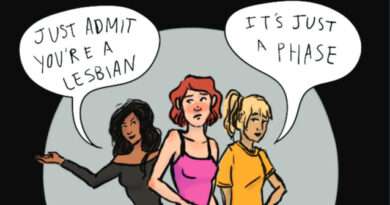Tackling Homophobia, Transphobia and Sexism in India through Comprehensive Sexuality Education
Comprehensive Sexuality Education is a need of the hour in India since discussions on sex and sexuality have been avoided due to the shame attached to them by our culture. The lack of discussions has caused children and adolescents to resort to the Internet to learn about important topics such as gender, sex, sexual orientation, and reproductive health. While the internet can provide solace from shame about learning about these topics, it can cause children and adolescents to come across information that isn’t age-appropriate or scientifically true. It can also cause young minds to be exposed to sexist, homophobic, and transphobic discussions, which can harm their understanding of gender and sexuality.
What is Comprehensive Sexuality Education, and why is it important?
Image by Markus Winkler from Pixabay
Comprehensive Sexuality Education (CSE) is a holistic curriculum-based approach to teaching students about the various aspects of gender, sex, sexuality, sexual orientation, relationships, and overall well-being. CSE aims to equip students with a broader understanding of their bodies by incorporating age-appropriate modules into the curriculum from a young age. These educational modules are based on scientifically accurate, research-based information, and are designed to help children and adolescents navigate the physical, cognitive, and social aspects of their gender and sexuality. CSE also covers topics such as consent, reproductive health, sexual health, abuse, bodily autonomy, and boundaries, which allows students to make healthy choices and stay informed about the best practices for their bodies.
CSE can prove to be extremely beneficial in a country like India, where the culture is highly patriarchal and heteronormative, and discussions around gender and sex are considered taboo. Moreover, school textbooks often reinforce sexist and misogynist ways of thinking and cause young minds to internalise patriarchy, which directly affects self-perception as well as social interactions. Another problem with the Indian curriculum is the lack of LGBTQ+ representation, which not only prevents LGBTQ+ students from learning about their identity but also perpetuates a binary understanding of gender as well as sexual orientation. Such binary understanding instills homophobia and transphobia into students because they perceive queer identities as ‘different’ and ‘unnatural’ since they have never been taught about the same. The lack of representation coupled with heterosexist socialisation in schools through gendered uniforms, segregated seating, sexist policies, slut shaming, and transphobic grooming rules cause further hindrance to gaining a healthy understanding of gender, sex, and sexuality.
Positive Effects of CSE
Photo by Nikhita S on Unsplash
CSE would not only help in providing students with a better representation of gender identity and sexual orientation but will also help remove the shame and stigma that is attached to these topics by providing a safe space within the classroom to ask questions and gain adequate information. Having open conversations about puberty, sexual health, contraceptives, attraction, and relationships will contribute towards a positive understanding of one’s body and help facilitate healthy interactions among peers. Moreover, it will also prevent unhealthy sexual encounters, STIs, and unwanted pregnancies. Modules on consent, personal boundaries, and healthy sexual behaviours will provide the means to recognise, report, and prevent instances of sexual abuse among children and adolescents, who are highly vulnerable towards the same.
CSE would also have a positive effect on the mental and physical health of LGBTQ+ students and help them navigate their identity by providing information about diverse sexualities, differences between gender and sex, different types of attraction, etc. The inclusion of queer-inclusive modules will prevent bullying and harassment of LGBTQ+ students and help facilitates respectful interactions among peers. It will also prevent alienation and discrimination and protect LGBTQ+ students from undergoing social isolation. A healthy school environment will likely reduce dropout rates of queer and trans students and contribute positively towards their personal and professional development.
Challenges of Implementing CSE
Due to India’s conservative outlook towards sex education, it will likely be challenging to introduce CSE into the curriculum since parents are often against the idea of their children learning about sex and romantic relationships. This is largely because Indian families continue to follow the ‘tradition’ of arranged marriages, which are heterosexual in nature and driven by casteist notions. However, change is possible, and the recent addition of a chapter on Dating and Relationships in a Class 9 CBSE book signals a positive step. Through consistent actions and research-backed proposals, it is possible to incorporate CSE into the Indian educational curriculum to ensure that students of all ages are able to access safe, healthy, and scientifically accurate information about gender and sexuality. Such a move would not only aid in eradicating sexism, homophobia, and transphobia but will also contribute towards reducing gender-based violence, toxic masculinity, child sexual abuse, unwanted pregnancies, sexually transmitted diseases, and bullying. Overall, CSE would prove to be an excellent addition to the curriculum and will help shape young minds to develop a positive understanding of their bodies, leading to their holistic development.
Citations:
- https://www.theswaddle.com/from-teachers-to-textbooks-gender-stereotypes-in-indian-schools
- https://www.youthkiawaaz.com/2020/09/a-plea-for-the-inclusion-of-the-lgbtqia-community-in-ncert-textbooks/
- https://www.indiatoday.in/education-today/featurephilia/story/child-sexual-abuse-in-india-alarming-statistics-lifelong-impact-how-to-heal-2416285-2023-08-04
- https://www.storypick.com/cbse-book-chapters-on-dating-and-relationships/
Image Sources:



